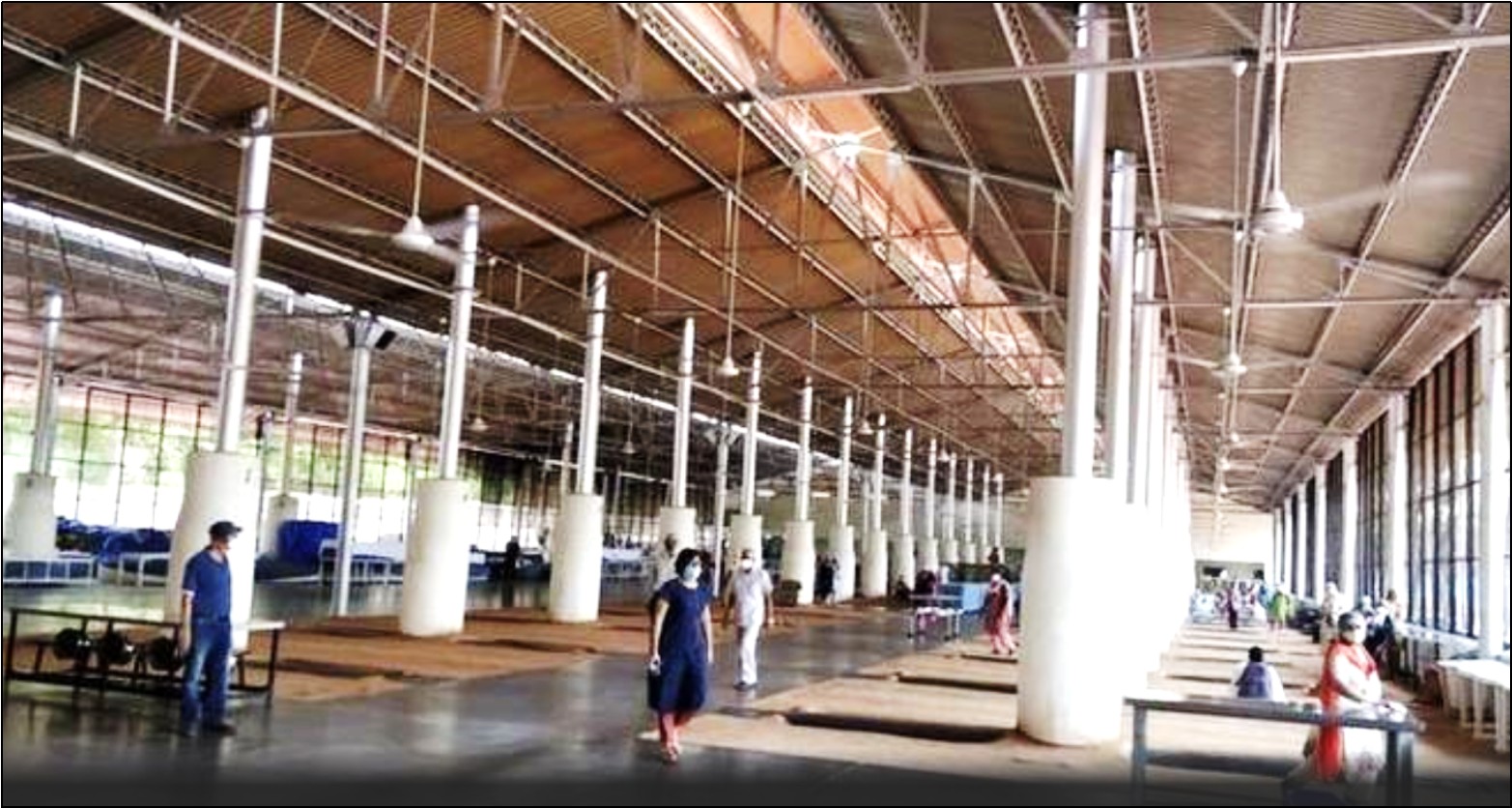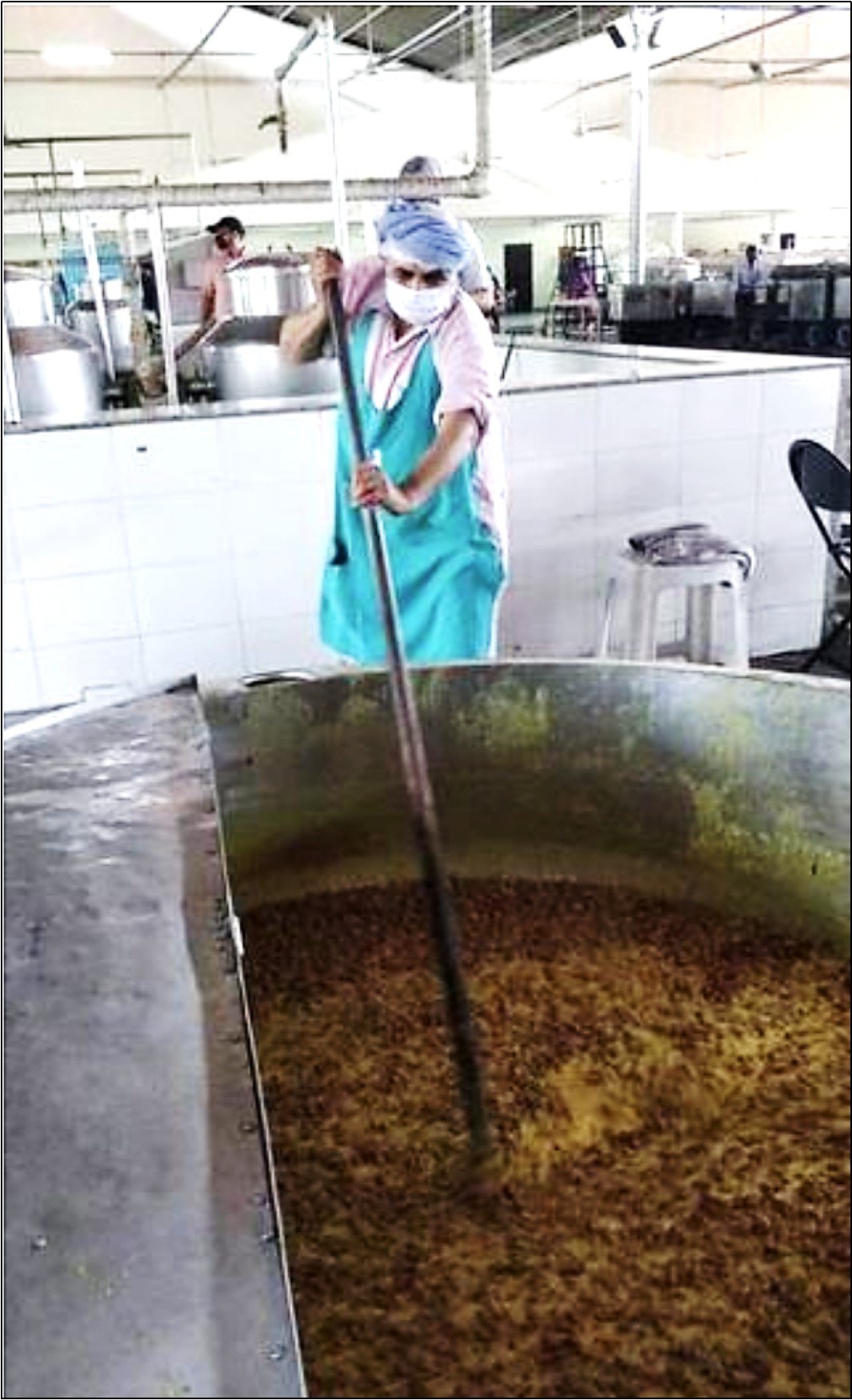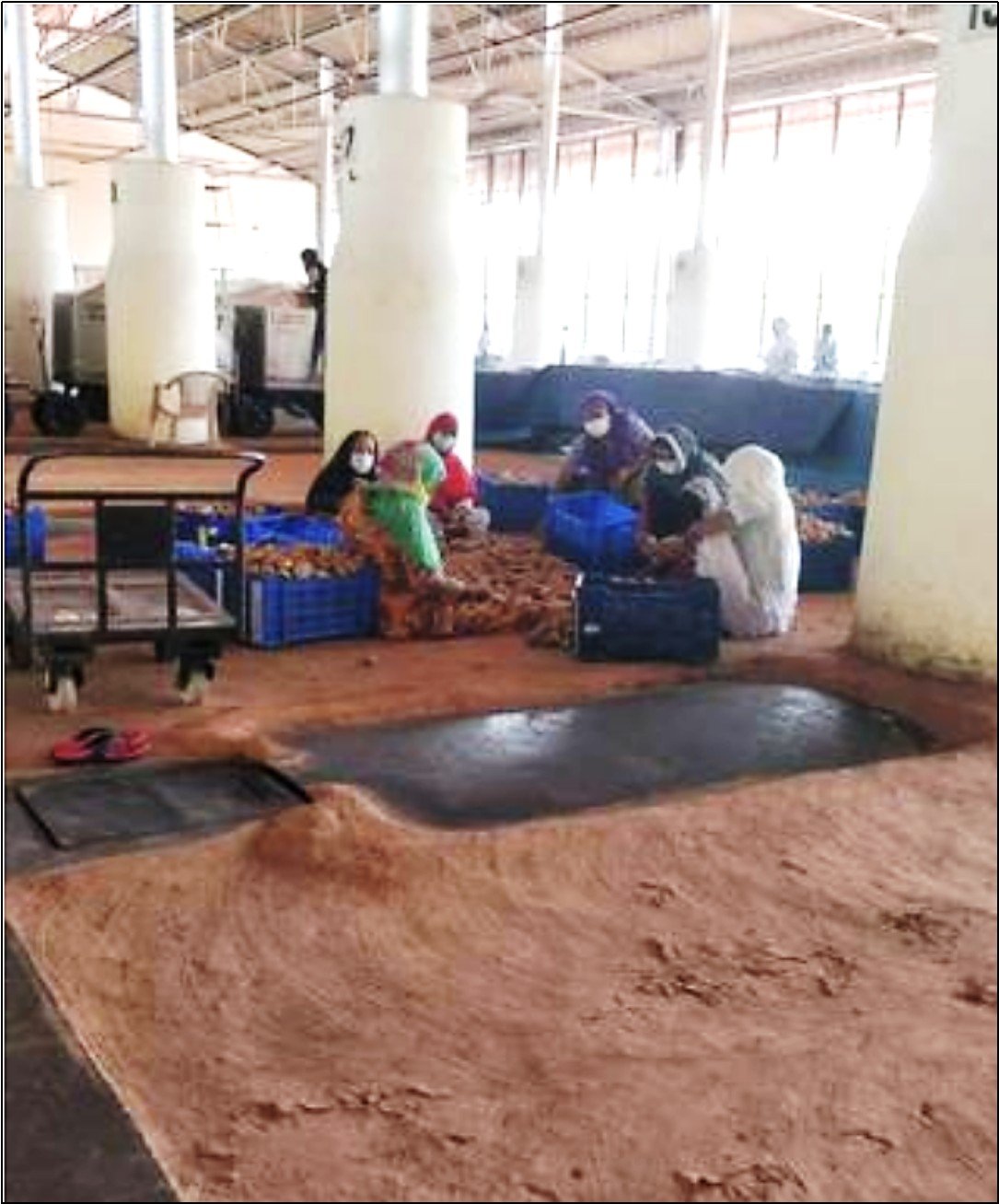This large spotless kitchen feeds Delhi’s largest COVID-19 facility
 The community kitchen at the Radha Soami Satsang Beas Centre.
The community kitchen at the Radha Soami Satsang Beas Centre.
By Sunalini Mathew
(The Hindu, Delhi, India, 11 July 2020) – This kitchen that feeds the patients admitted to the 10,000-bedded Sardar Patel Covid Centre and Hospital in Delhi’s Chhatarpur, shows how regular people who offer 'sewa' can sustain a large facility.
In one corner of an industrial size kitchen, built to feed up to three lakh people at a time, about 20 women sit on the ground and roll out rotis. At another end of the 55,000 square foot shed, there are 10 women breaking up chunks of jaggery for the evening tea. A man moves kadhi around in a utensil with a capacity of 5,000 litres, the pakoras bobbing to the surface in the yellow liquid. Embedded into a built-up platform, the pot is heated by diesel burners underground, and there are 20 such utensils.
The long, shed-like kitchen with mesh on the sides, is zoned into task-based spaces: roti-making on loh (iron) flats set into a surface of mud and lit by coal or wood, boilers for rice and dal, kadhais for vegetables and poha, a place for 1000-litre-capacity trolleys to stand, awaiting loading. At the two ends are the washing area and the store for dry ingredients stocked up for about a month. Everything is spotless and large, in a campus of red buildings, greenery, and many shed-like structures.
 A volunteer stirring a large kadhi which has a 1,000-litre capacity.
A volunteer stirring a large kadhi which has a 1,000-litre capacity.
“We can make upto 700 chapatis at a time,” says one of the volunteers at the kitchen. She lives in Noida with her family, but has been here 10 days now, overseeing food operations for the 10,000-bedded Sardar Patel Covid Centre and Hospital set up in the Radha Soami Satsang Beas’s (RSSB) Chhatarpur centre.
In fact, anyone volunteering with the kitchen is asked to live on the premises for at least a week. The sect lays emphasis on sewa without attention on any one individual, and the conversation hinges on the fact that none of the people who volunteer are hospitality industry professionals, and all come from different walks of life.
Of the roster of about 10,000 registered volunteers, there are about 225-250 assigned to kitchen duty. “This is nothing,” says one of the lead volunteers who has been offering his services since 1989. “At the time of the lockdown, we were doing 1,25,000 packets of food a day.” He adds that when they do large satsangs, about 80,000 people live on the 300-acre premises and the kitchen churns out langar (dal, rice, roti, sabzi) thrice a day.
 Women sorting potatoes. The loh (iron grill) is in the foreground.
Women sorting potatoes. The loh (iron grill) is in the foreground.
Since the facility was opened on July 5 to the COVID-19 affected, there have been just over 100 patients and 500 staff of the Indo-Tibetan Border Police and the government. It’s still an early start though, at 3:30 am and a late finish at about 9 pm, with a shift system in place.
With an all-vegetarian menu — a stipulation by the sect — a volunteer says the ITBP has given them a weekly menu to be followed. Surprisingly, there’s chhola-bhatura on a Monday morning, aaloo paratha on a Wednesday, and poori-aaloo on a Thursday, for breakfast. There’s also a fruit and milk. Lunch is roti-rice-pulses-veg, with dinner being much the same. Thursday and Saturday have a halwa and seviya for dessert. They also make a daily immunity shot consisting of turmeric, honey, lime, and a few other ingredients.
The food is packed in disposable slotted plastic containers and delivered to the entry of the COVID-19 area. A volunteer adds that all food, except the deep-fried items, is cooked in desi ghee. Funds for the food come from the RSSB, and all those who work here are doing so for free. “It’s about service to the community,” he says.